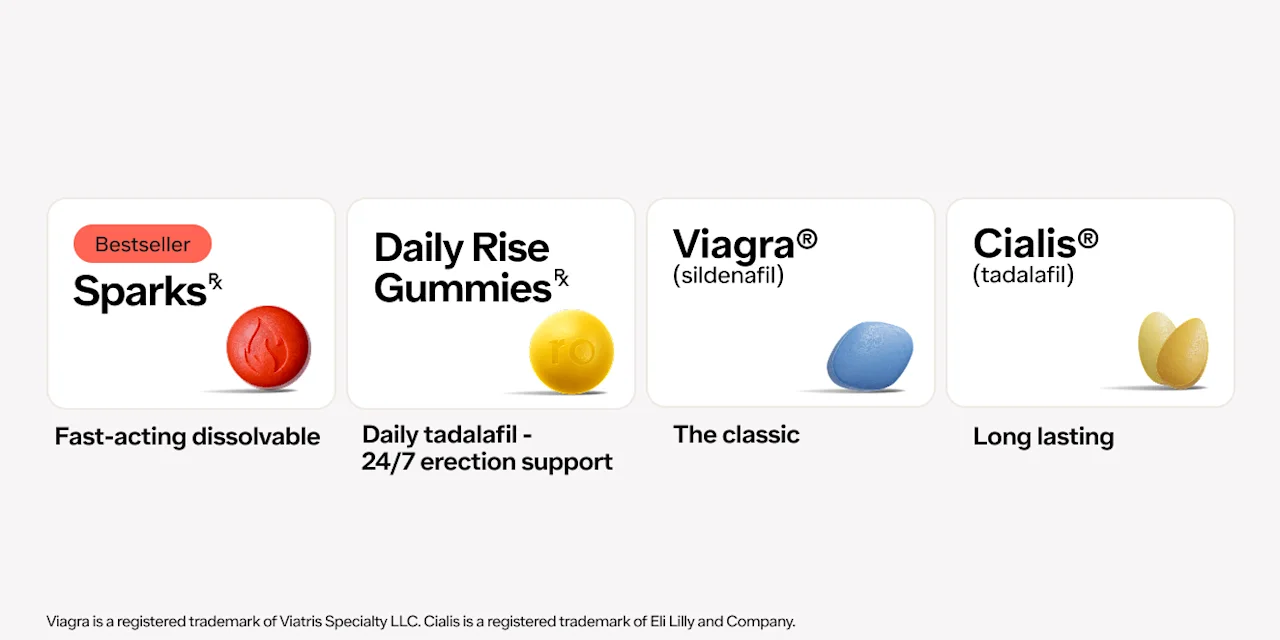Key takeaways
Penis fillers may increase your girth (not length) by up to 1.5 inches. Men also reported higher self-esteem and confidence after using penis filler.
To maintain the thicker look, you’ll need to get maintenance injections every 1–2 years.
Here's what we'll cover
Here's what we'll cover
Here's what we'll cover
Key takeaways
Penis fillers may increase your girth (not length) by up to 1.5 inches. Men also reported higher self-esteem and confidence after using penis filler.
To maintain the thicker look, you’ll need to get maintenance injections every 1–2 years.
You’ve heard of lip filler? Meet penis filler, a penile girth enhancement procedure that promises a similar effect: making a penis look fuller and plumper. Penis is a fairly new procedure, but it is quickly getting more and more popular.
But the question is, does penis filler actually work? To find the answer, we dove into the research and talked with two plastic surgeons who specialize in the procedure, Dr. David Shafer, MD, and Dr. Norman M. Rowe, MD.
What is penis filler?
During a penile girth enhancement procedure, a board-certified plastic surgeon will make a handful of injections on the base of the penis and the shaft to create an instantly thicker, plumper look. Some basic cleaning and hygiene is required after, along with a short 1–2 week break from sex.
In short, a penis filler procedure does what you think it does: it fills your penis so it appears thicker. A form of hyaluronic acid filler fills the penis, according to NY-based Dr. David Shafer, MD, board-certified plastic surgeon and inventor of the SWAG procedure (which stands for Shafer Width and Girth, a version of the procedure pioneered by Dr. Shafer).
Hyaluronic acid is the go-to filler in dermatological and plastic surgery procedures, favored for its low risk of complications. “Hyaluronic acid-based products such as Juvederm Voluma and Volux have an added safety factor as they have an antidote with hyaluronidase, an enzyme that can ‘melt’ the filler,” said Dr. Shafer. “This is important for aesthetic reasons but also for safety if there is a complication from the filler. That is why hyaluronic acid-based fillers are always my first line treatment.”
“Patients who were previous “growers” most often turn into “showers” from the weight of the filler holding the penis in a more out position and reducing retraction,” shared Dr. Shafer.
It’s easy to understand why the procedure is growing in popularity. It may offer instant results, is minimally invasive, and you only have to wait a week or two before you can enjoy the results in action. It’s important to note that penis filler injections do not make your penis longer in any permanent sense. Rather, they make it look larger, both when flaccid and erect, said Dr. Norman M. Rowe, MD, a board-certified plastic surgeon with a practice in New York and New Jersey. “It ‘feels’ like it always has and the look is larger, but natural.”
For those in search of a longer penis, there may be other options, from penis pumps to jelqing, though there aren’t any scientific studies that prove these methods work. And while penile implants may be an option, there’s a non-negligible risk of infection and complications with surgery, in contrast to a less-invasive option like penis filler.
What are the benefits, if any, of penis filler?
Men who get penis filler procedures are generally very happy with the new size and appearance of their penis, according to a survey of men who had gotten the procedure done within the last year. A separate, longer study found that men remained happy with the results 18 months later. Men who have undergone penile girth enhancement said it improved other aspects of their wellbeing, including their:
Genital self-image
Self-esteem
Self-confidence, especially in situations where someone could see their penis, like a locker room
Sexual confidence
On average, penis fillers increase penile circumference by about 0.67 to 1.54 inches. Nearly half (45%) of all men wish they had a larger penis, and penis filler may be able to help with that. But, it’s worth noting that many of the men seeking penile enhancement procedures have a normal size penis to begin with, according to more than one study. By the way, the average penis is 3.6 inches long and 3.7 wide when flaccid, and 5.2 inches long and 4.6 wide when it’s hard.
Some research suggests that while men may seek penis filler for a number of reasons, the ones who get it all tend to rate their penises as “smaller than ideal.” In one small study (of only six men), all of the men seeking penile augmentation procedures felt that their penis was smaller than others, even though they had never been told that.
Size is just part of the puzzle, said Dr. Shafer. In reality, the main goal of patients seeking penis filler is “enhancing width and girth, primarily for cosmetic purposes, as well as intimate relations,” he said. “While we do have patients that are on the smaller end of the spectrum seeking enhancement, many patients are actually average to large but they are looking to boost their size even more to enhance their relationships or boost their confidence.”
“Some men do it because they are self-conscious about [their] penis size, while others have related to me [that] they do it to ‘spice things up,’” shared Dr. Rowe.
Are there any side effects or risks of penis filler?
The risks associated with penis fillers are generally pretty low when being injected by an experienced, board-certified plastic surgeon. Generally, the main side effects you’ll be dealing with after the procedure include “some mild to moderate swelling and occasionally bruising and mild soreness,” according to Dr. Shafer.
Having said that, there are some potential caveats to be aware of with a penis filler procedure.
Pain and bruising
Generally, penis filler procedures are safe with transient, manageable side effects. In one study, men reported pain, swelling, redness, and bleeding in the first 30 minutes after the procedure, but no serious adverse events. In another, only 4.3% reported complications such as bleeding, nodules, or infection.
It’s worth noting that the US Food and Drug Administration has not approved any type of injectable for the purpose of enhancing size of the penis, so penis fillers are an off-label use of hyaluronic acid, which is why it’s crucially important to have the procedure done a board-certified plastic surgeon who specializes in penile girth enhancement—and never by someone at a less-than-trusted facility or on your own, which is when serious complications can happen.
Contour issues
After the procedure, you may end up with some unexpected lumps and bumps along the shaft, which can happen if the filler is injected too quickly for it to disperse evenly. In one study, just over 2% of men reported this issue.
“Some contour issues are not uncommon as the filler is settling and are addressed during the follow up visit,” said Dr. Shafer, who uses a micro-cannula technique to achieve smoother results. “We have patients wear a specialized wrap and perform massages on the areas to help smooth the results as the filler is integrating. Once healed, it feels very similar to your normal skin.”
Maintenance treatments
Similar to other cosmetic procedures, penis filler is not a one-and-done process. It can take up to three initial treatments to reach your desired appearance, said Dr. Shafer. And, while penis fillers instantly add about an inch of girth to your penis, that decreases by about a quarter-inch after six months.
People who get hyaluronic acid-based fillers like Voluma and Volux will start needing maintenance treatments around two years, but it can be smart to schedule a maintenance treatment at 18 months. “Just as you don’t wait for your gas tank to be empty to refill your tank, we recommend patients not to wait for the filler to completely metabolize before having a maintenance treatment,” he said.
What does a penis filler procedure entail?
Typically, the penis filler procedure itself only lasts about 30 minutes. First, you’ll be numbed in the groin using local anesthesia. Then, the provider will perform a series of injections to achieve the look you discussed during your consultation.
You’ll get to see the results immediately once the procedure is over, along with some mild bruising and swelling. After the procedure, you can generally return to normal life immediately—with the exception of one major activity: sex. Both doctors we spoke to advised against sex or masturbation for 1–2 weeks after the procedure to ensure healthy healing.
Penile filler usually increases penile girth by about 1 inch, but the results don’t last forever. According to a follow-up of 230 men, that increase goes down by about a quarter-inch after six months. “The fillers generally last 2 years,” said Dr. Rowe. “Most of my patients start getting touch up or refills after 18 months so as not to totally start from scratch.”
How much does penile girth enhancement cost?
The cost for the initial procedure can vary depending on the type of filler you use, your goal, and the amount of syringes needed to make that goal a reality. “I generally tell patients that if they are going to do the procedure 1 or 2 syringes is not going to make a difference. Multiple syringes need to be used,” said Dr. Rowe.
Providers typically price the procedure based on syringe, so the total cost may range from $9,500 on the lower end to upwards of $20,000, depending on the type of filler and number of syringes used.
So, does penis filler actually work?
Anecdotal reports say yes, and the research seems to agree (although much more research needs to be done). Penile girth enhancement increases the girth of a penis by about 1 inch, on average. After the procedure, men report improved body image, self-esteem, and confidence—both in and out of the bedroom. However, maintenance is required, and you’ll need to go back for more treatments about every other year.
If you’re interested in learning more, talk to your healthcare provider.
DISCLAIMER
If you have any medical questions or concerns, please talk to your healthcare provider. The articles on Health Guide are underpinned by peer-reviewed research and information drawn from medical societies and governmental agencies. However, they are not a substitute for professional medical advice, diagnosis, or treatment.
References
Ahn, S. T., Shim, J. S., Bae, W. J., et al. (2022). Efficacy and Safety of Penile Girth Enhancement Using Hyaluronic Acid Filler and the Clinical Impact on Ejaculation: A Multi-Center, Patient/Evaluator-Blinded, Randomized Active-Controlled Trial. The World Journal of Men's Health, 40(2), 299–307. doi:10.5534/wjmh.210007. Retrieved from https://www.ncbi.nlm.nih.gov/pmc/articles/PMC8987147/
Google Trends (n.d.). Penis filler. Retrieved Jun. 19, 2024 from https://trends.google.com/trends/explore?date=today%205-y&geo=US&q=penis%20filler&hl=en
Khor, N. W. M., Dhar, A., & Cameron-Strange, A. (2021). The perils of penile enhancement: case report of a fulminant penile infection. BMC Urology, 21(1), 115. doi:10.1186/s12894-021-00878-5. Retrieved from https://www.ncbi.nlm.nih.gov/pmc/articles/PMC8386090/
Quan, Y., Gao, Z. R., Dai, X., et al. (2021). Complications and management of penile augmentation with hyaluronic acid injection. Asian Journal of Andrology, 23(4), 392–395. doi:10.4103/aja.aja_78_20. Retrieved from https://www.ncbi.nlm.nih.gov/pmc/articles/PMC8269832/
Sharp, G., Fernando, A. N., Oates, J., et al. (2023). Men's Experiences and Psychological Outcomes of Nonsurgical Medical Penile Girth Augmentation: A Preliminary Prospective Study. Aesthetic Surgery Journal, 43(2), 181–191. doi:10.1093/asj/sjac243. Retrieved from https://www.ncbi.nlm.nih.gov/pmc/articles/PMC9896141/
Sharp, G., & Oates, J. (2019). Nonsurgical Medical Penile Girth Augmentation: A Retrospective Study of Psychological and Psychosexual Outcomes. Aesthetic Surgery Journal, 39(3), 306–316. doi:10.1093/asj/sjy108. Retrieved from https://academic.oup.com/asj/article/39/3/306/4993794?login=false
Sharp, G. & Oates, J. (2019). Sociocultural Influences on Men's Penis Size Perceptions and Decisions to Undergo Penile Augmentation: A Qualitative Study. Aesthetic Surgery Journal, 39(11), 1253–1259. doi:10.1093/asj/sjz154. Retrieved from https://academic.oup.com/asj/article/39/11/1253/5492379?login=false
Trost, L., Watter, D. N., Carrier, S., et al. (2024). Cosmetic penile enhancement procedures: an SMSNA position statement. The Journal of Sexual Medicine, 21(6), 573–578. doi:10.1093/jsxmed/qdae045. Retrieved from https://academic.oup.com/jsm/article/21/6/573/7656694?login=false
Vardi, L., Harshai Y., Tamir, G., Gruenwald, I. (2009). A Critical Analysis of Penile Enhancement Procedures for Patients with Normal Penile Size: Surgical Techniques, Success, and Complications. European Urology, 55(4), 1002. Retrieved from https://www.sciencedirect.com/science/article/abs/pii/S0302283808009354?via%3Dihub
Veale, D., Miles, S., Bramley, S., et al. (2015). Am I normal? A systematic review and construction of nomograms for flaccid and erect penis length and circumference in up to 15,521 men. BJU International, 115(6), 978–986. doi:10.1111/bju.13010. Retrieved from https://pubmed.ncbi.nlm.nih.gov/25487360/
Yang, D. Y., Jeong, H. C., Ko, K., et al. (2020). Comparison of Clinical Outcomes between Hyaluronic and Polylactic Acid Filler Injections for Penile Augmentation in Men Reporting a Small Penis: A Multicenter, Patient-Blinded/Evaluator-Blinded, Non-Inferiority, Randomized Comparative Trial with 18 Months of Follow-up. Journal of Clinical Medicine, 9(4), 1024. doi:10.3390/jcm9041024. Retrieved from https://www.ncbi.nlm.nih.gov/pmc/articles/PMC7230452/












